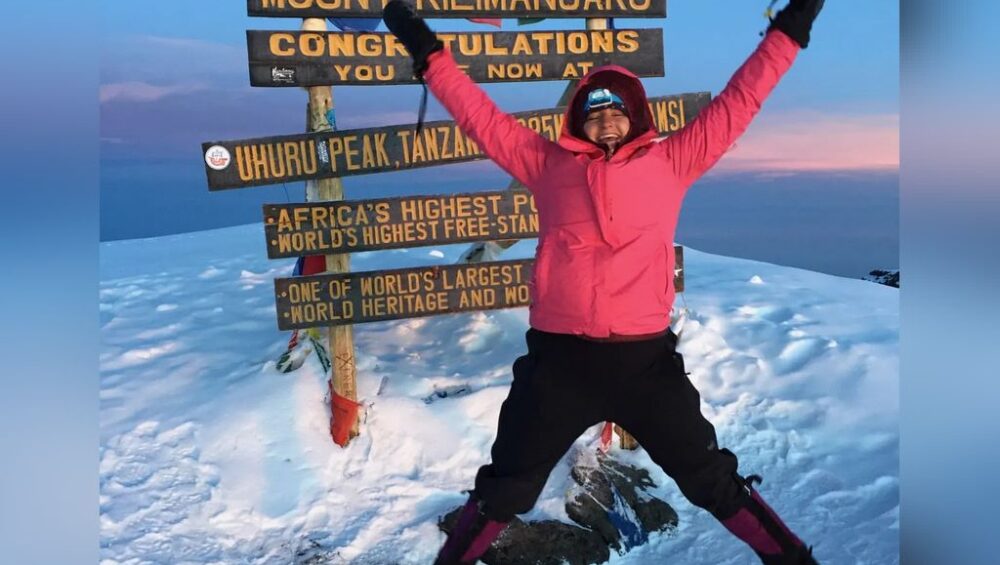Gear Up for Success:
Preparing for a Kilimanjaro climb? Don’t forget a thing with our comprehensive final checklist for Kilimanjaro climbing packing guide. From clothing to gear, we’ve got you covered!
Introduction:
Embarking on a Kilimanjaro climb is an exhilarating adventure, but proper preparation is essential for a safe and successful journey. To ensure you have everything you need for your trek to the summit, we’ve compiled the ultimate final checklist for Kilimanjaro climbing packing guide. From clothing and equipment to essential documents and personal items, this comprehensive guide will help you pack efficiently and effectively for your Kilimanjaro expedition.
Kilimanjaro Climbing Gear Checklist
Essential Equipment for a Successful Summit Bid
Having the right gear is crucial for a successful Kilimanjaro climb. From sturdy hiking boots to a reliable sleeping bag, make sure you have all the essential equipment to stay safe and comfortable during your trek.
Essentials:
- Hiking boots: Choose comfortable, broken-in boots with good ankle support.
- Backpack: Opt for a lightweight, durable pack with enough capacity for all your gear.
- Sleeping bag: Invest in a high-quality sleeping bag rated for cold temperatures.
- Trekking poles: Provide stability and support on steep and uneven terrain.
- Headlamp: Essential for navigating camp and night-time summit attempts.
- Water purification tablets: Ensure access to safe drinking water throughout your trek.
- Sun protection: Pack sunscreen, sunglasses, and a wide-brimmed hat to protect against sunburn.
- First aid kit: Include basic supplies for treating minor injuries and illnesses.
Clothing Checklist
Dressing for Success on the Mountain
Proper clothing is essential for staying warm, dry, and comfortable during your Kilimanjaro climb. Layering is key to regulating your body temperature as you ascend to higher altitudes.
Essentials:
- Base layers: Moisture-wicking shirts and pants to keep you dry and comfortable.
- Insulating layers: Fleece jackets or down vests for added warmth in cold conditions.
- Outer layers: Waterproof, breathable jacket and pants to protect against rain and wind.
- Hiking socks: Moisture-wicking socks to prevent blisters and keep your feet dry.
- Gloves: Lightweight gloves for chilly mornings and summit night.
- Beanie or hat: Keep your head warm during cold weather and high altitudes.
- Gaiters: Protect your boots and lower legs from snow, mud, and debris.
Personal Items Checklist
Don’t Forget the Essentials
In addition to gear and clothing, there are several personal items you’ll need to bring along for your Kilimanjaro climb. From travel documents to toiletries, make sure you have everything you need for a comfortable and enjoyable trek.
Essentials:
- Passport and visas: Ensure all travel documents are valid and easily accessible.
- Travel insurance: Provide coverage for medical emergencies, trip cancellations, and evacuations.
- Cash and credit cards: Carry enough money for tips, souvenirs, and emergency expenses.
- Toiletries: Toothbrush, toothpaste, soap, and other personal hygiene items.
- Medications: Pack any prescription medications you may need during your trek.
- Camera: Capture memories of your Kilimanjaro climb with a lightweight, durable camera.
- Journal and pen: Record your thoughts, observations, and experiences along the way.
Final Checklist for Kilimanjaro Climbing Packing Guide
Ensure You Have Everything You Need
Before embarking on your Kilimanjaro climb, double-check your packing list to ensure you haven’t forgotten anything essential. From gear and clothing to personal items and documents, use this final checklist to make sure you’re fully prepared for your adventure.
Essentials:
- Hiking boots
- Backpack
- Sleeping bag
- Trekking poles
- Headlamp
- Water purification tablets
- Sun protection
- First aid kit
- Base layers
- Insulating layers
- Outer layers
- Hiking socks
- Gloves
- Beanie or hat
- Gaiters
- Passport and visas
- Travel insurance
- Cash and credit cards
- Toiletries
- Medications
- Camera
- Journal and pen
FAQs (Frequently Asked Questions)
How should I pack for a Kilimanjaro climb?
When packing for a Kilimanjaro climb, prioritize lightweight, moisture-wicking clothing and high-quality gear suitable for cold temperatures and rugged terrain. Pack efficiently to minimize weight and bulk, and use compression sacks or packing cubes to organize your belongings.
Do I need to bring my own climbing equipment for Kilimanjaro?
No, you do not need to bring your own climbing equipment for a Kilimanjaro climb. Most reputable trekking companies provide all necessary gear, including tents, sleeping bags, and cooking equipment. However, you will need to bring your own personal clothing and items as outlined in our packing guide.
How much luggage can I bring on a Kilimanjaro climb?
Most Kilimanjaro trekking companies have weight restrictions for luggage carried by porters. Typically, climbers are allowed to bring one duffel bag or backpack weighing up to 15-20 kilograms (33-44 pounds), plus a small daypack for personal items carried during the day.
Can I rent gear for my Kilimanjaro climb?
Yes, many trekking companies offer gear rental services for climbers who prefer not to bring their own equipment. However, it’s essential to book rental gear in advance to ensure availability and proper fit.
What should I wear on summit night?
On summit night, temperatures on Kilimanjaro can drop below freezing, so it’s essential to dress warmly. Layering is key, with moisture-wicking base layers, insulating mid-layers, and a waterproof outer layer to protect against wind and precipitation. Don’t forget to wear warm gloves, a beanie or hat, and insulated hiking socks to keep your extremities warm.
How can I prepare physically for a Kilimanjaro climb?
Physical preparation is crucial for a successful Kilimanjaro climb. Focus on cardiovascular exercise, strength training, and endurance activities to build stamina and endurance. Additionally, practice hiking with a loaded backpack to simulate the conditions you’ll encounter on the mountain.
Conclusion:
Preparing for a Kilimanjaro climb requires careful planning and preparation, but the experience of reaching the summit is truly unforgettable. By following our comprehensive final checklist for Kilimanjaro climbing packing guide and preparing both physically and mentally for the challenge ahead, you’ll be ready to embark on the adventure of a lifetime.





